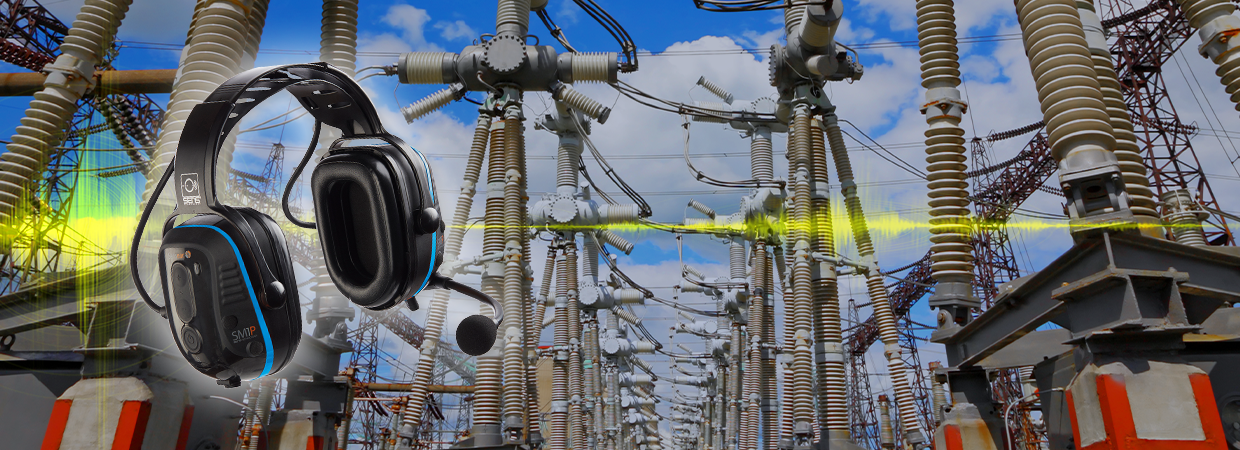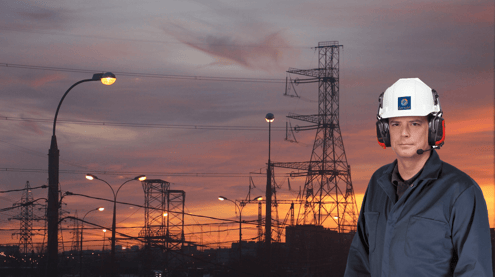- Home
- Blog
- Hearing Protection
- The Deafening Soundscape in the Power and Utilities Industry

The Deafening Soundscape in the Power and Utilities Industry
Noise is an inevitable part of the power and utilities industry. The constant hum of turbines, the roar of engines, and the clanking of machinery can create a deafening soundscape that workers are exposed to on a daily basis. While these sounds may seem like background noise to some, the truth is that they can pose a serious risk to the hearing health of workers. This exposure to extreme noise in the power, energy, and utilities industry is a widespread problem that can lead to irreversible hearing damage, affecting not only the health and well-being of workers but also the productivity and safety of the entire industry.
Power and Energy Noise Conditions
Exposure to high levels of noise from machinery  and equipment is a common risk factor for hearing loss in the power and energy industry. The power and energy industry includes a wide range of jobs and work environments, thus the risk of hearing loss can vary depending on the specific job and work conditions. Though The National Library of Medicine found that the average noise levels in electric plants exceed 85 dB(A), which is above what OSHA considers a safe level of noise exposure. In the study, the average noise level of three gas-fired electric plants was 91.3 dB(A). These findings indicate that workers in the electric power generation industry are exposed to hazardous noise levels, which can lead to permanent hearing loss if left unaddressed. The study underscores the importance of implementing effective hearing conservation programs in the industry to mitigate the risk of noise-induced hearing loss among workers, as hearing loss is the third most common chronic physical condition in the United States.
and equipment is a common risk factor for hearing loss in the power and energy industry. The power and energy industry includes a wide range of jobs and work environments, thus the risk of hearing loss can vary depending on the specific job and work conditions. Though The National Library of Medicine found that the average noise levels in electric plants exceed 85 dB(A), which is above what OSHA considers a safe level of noise exposure. In the study, the average noise level of three gas-fired electric plants was 91.3 dB(A). These findings indicate that workers in the electric power generation industry are exposed to hazardous noise levels, which can lead to permanent hearing loss if left unaddressed. The study underscores the importance of implementing effective hearing conservation programs in the industry to mitigate the risk of noise-induced hearing loss among workers, as hearing loss is the third most common chronic physical condition in the United States.
Effects of Extreme Noise Exposure
It's easy to brush off safety issues that you can't see, and by not taking the right safety precautions irreversible damage takes place. Therefore it is necessary to learn about the causes and effects of extreme noise exposure. According to a study by the National Institute for Occupational Safety and Health (NIOSH), approximately 12% of all utility workers have reported experiencing tinnitus due to extreme noise exposure. The study found that the risk of tinnitus was significantly higher for workers who were exposed to noise levels exceeding 90 dB(A) and who had worked in the industry for longer periods. These findings highlight the need for effective hearing protection in the power and utilities industry to mitigate the risk of tinnitus and other hearing-related issues among workers.
Tinnitus is a common hearing disorder characterized by a persistent ringing or buzzing sound in the ears. While it can be caused by a range of factors, exposure to loud noise is a leading cause of tinnitus. In the power, energy, and utilities industry, workers are exposed to high levels of noise on a daily basis, putting them at risk of developing tinnitus and other hearing-related issues. Many people with tinnitus experience anxiety, depression, and difficulty sleeping, which can lead to decreased concentration, memory problems, and fatigue. In severe cases, tinnitus can be debilitating and can interfere with daily activities and social interactions. Though with the right hearing protection, these hearing-related issues are preventable.
Hearing Protection and Communication Solution
Worldwide, occupational noise exposure is responsible for 16% of cases of disabling hearing loss in adults. Proving that the right steps for occupational health safety are not being taken. That's why Sensear provides the ultimate safety and communication solution, in even the most extreme environments. With clear and effective communication, to 360° situational awareness, you can hear speech and stay protected with Sensear. Options ranging from wireless, to intrinsically safe, or dual protection, ensure that your safety and communication needs are being met. Prevent the irreversible effects of high noise exposure with Sensear.
Try our headset selector tool to find the right match for your needs:









